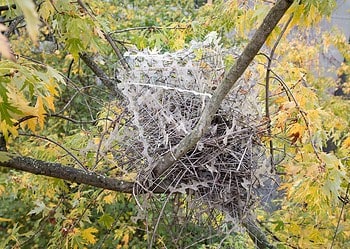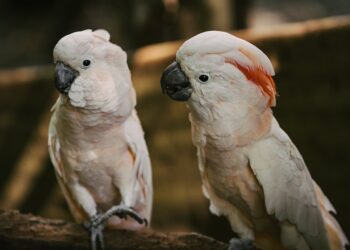
One day in Chicago, a slab of ancient limestone arrived at the Field Museum. To the untrained eye, it looked unremarkable, dusty and pale. But inside it, buried for millions of years, was a creature that once danced in the boundary between earth and sky. When paleontologist Jingmai O’Connor first saw it, she couldn’t believe what she was about to touch: “It’s one of the most important fossils of all time,” she told ZME Science. “For someone who studies Mesozoic birds, it’s like the holy grail.”
That fossil was a nearly complete skeleton of Archaeopteryx — the oldest known bird. Now, after more than 160 years since the species was first discovered in Bavaria, a new study published in Nature has revealed that this “Chicago Archaeopteryx” might be the best-preserved specimen of its kind. And it’s reshaping what we thought we knew about the evolution of flight.
A Fossil Like No Other

The limestone slab was originally unearthed in the 1980s near Solnhofen, Germany, and spent decades in private collections. Only in 2022 did it arrive at the Field Museum, thanks to a coalition of supporters. What the museum got was far more than expected.
“It didn’t look like much at first,” O’Connor recalled. “We didn’t know how much of the animal was preserved. Then we X-rayed it, and we realized it was almost 100% complete. That was super exciting!”
The next step was revealing the fossil without damaging it — a painstaking process that took more than 1,300 hours. Using dental tools, ultraviolet light, and CT scans, a team led by fossil preparators Akiko Shinya and Constance Van Beek meticulously freed the delicate bones and soft tissues from the surrounding stone.
What they found was astonishing.
For the first time, scientists could see the complete palate of Archaeopteryx — the bony roof of its mouth. “This helps us understand cranial kinesis,” O’Connor explained, “the ability of a bird to move its upper beak independently from its braincase.” In modern birds, this trait supports feeding specialization and may have played a role in their spectacular evolutionary radiation into over 11,000 species.
They also found a full vertebral column, including 24 tail vertebrae — two more than previously recorded — along with tiny skeletal details like the proatlas, a rarely preserved neck bone that hints at the creature’s flexibility and movement. The skull showed a mosaic of features linking it to both non-avian dinosaurs and more derived birds.
A Ground Walker, a Tree Climber, a Flyer

But bones alone weren’t the only treasure. Under UV light, patches of fossilized skin and feathers came alive with detail. Scales on the bottom of the right foot showed toe pads built for walking. “That tells us Archaeopteryx spent a lot of time on the ground,” said O’Connor. The proportions of the Chicago specimen (the smallest Archaeopteryx found thus far) are very similar to birds like pigeons that forage on land.
Yet the claws and hand structure suggested it could also climb trees.

Then came the feathers.
For years, paleontologists have debated whether Archaeopteryx could truly fly. The Chicago specimen may finally put this debate to rest as it preserved a set of long, symmetrical feathers on the upper arms, called tertials. These have never been seen before in other Archaeopteryx.
Modern birds with long upper arm bones — like pelicans — need tertial feathers to close the gap between the wing and the body. If air leaks through that gap, you can’t generate lift. The presence of tertials in the Chicago specimen suggests that Archaeopteryx had evolved this aerodynamic solution. In contrast, non-flying feathered dinosaurs like Zhenyuanlong and Caudipteryx lack these feathers entirely.
“The reason we have not seen these feathers before is that the inner parts of the wing are usually obscured by overlap with the body. But in our specimen, the wings had detached from the body and flipped upside down so that they are very clear (no overlap with any other parts of the body). I don’t quite understand how that happened after death, but I’m sure glad it did!” O’Connor told ZME Science.
This tells us one important thing: Archaeopteryx could fly.
A Bridge Between Evolutionary Worlds

The Chicago specimen places Archaeopteryx more firmly as a transitional species, a bridge in the evolution from ground-dwelling predators to the birds of today. It had open pennaceous feathers — soft and fluffy — on much of its body, yet closed, flight-capable feathers on its wings and tail. It walked, it climbed, it likely glided or flapped through the Jurassic forests.
Its skull bore a mix of rigid and flexible elements. Its foot pads resembled those of modern ground birds. And its wings were built with an engineering logic that mirrored, in primitive form, the solutions nature would refine for another 150 million years.
This specimen gives us new information from just about every part of the body. And thanks to CT data, we can now study it in ways that preserve it for future generations. That’s a big deal.
“I’d really like to stress the international collaborative nature of this project. I think that’s important to highlight right now — international collaboration is critical for scientific progress. Additionally, I want to say that what we have revealed in this paper is just the tip of the iceberg. I am blown away by how much new information this specimen is giving us across the skeleton and soft tissues thanks to the CT data. There are many more papers to come, so stay tuned!” O’Connor said.
The findings appeared in the journal Nature.






